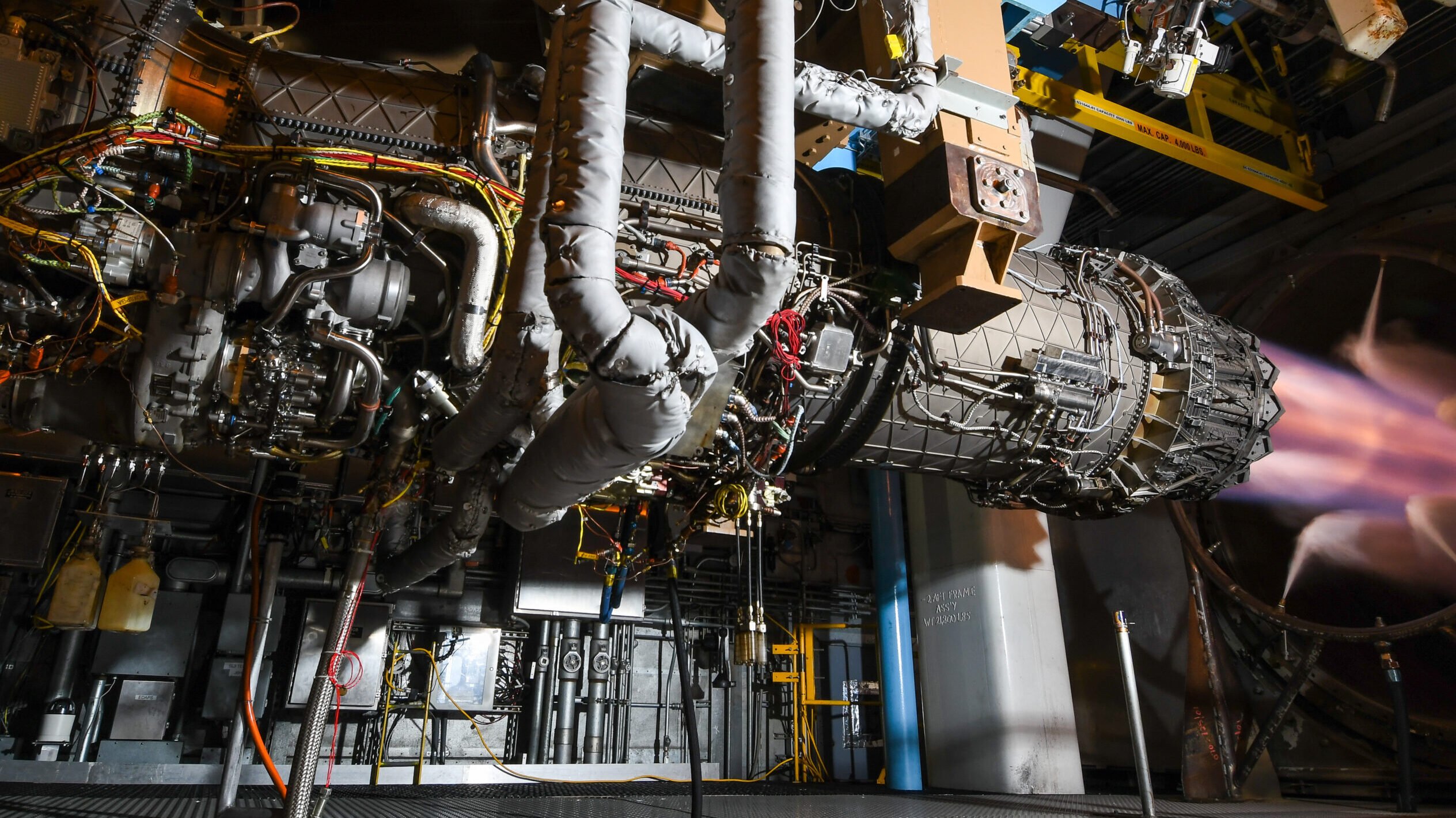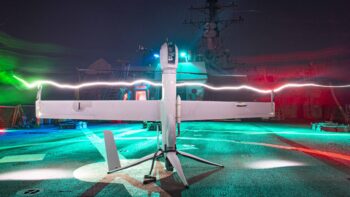
A Pratt & Whitney F135 engine undergoes accelerated mission testing in Sea Level Test Cell 3 at Arnold Air Force Base, Tenn., Nov. 15, 2021. The F135 is the engine used to power the F-35 Lightning II. (US Air Force photos by Jill Pickett)
WASHINGTON — An upgrade to the F-35’s engine offered by Pratt & Whitney is set to enter service by 2029, company officials said Tuesday, adding that the program remains “on track” despite the lack of an approved fiscal year 2024 budget.
Speaking during a briefing with reporters, Pratt Vice President for the F135 program Jennifer Latka said the company is planning for a preliminary design review (PDR) for the engine upgrade in May and aims to finish its design phase with a critical design review “in roughly the middle of 2025.” The program, known as the Engine Core Upgrade (ECU), is then set to run its first engine test by 2026 and field in 2029, according to Latka.
“The design is on track and we are hitting all of our schedule milestones,” she said.
Still, the company’s previous timelines projected slightly earlier dates for the ECU program. For example, late last year Latka said the PDR was planned for January, and in June 2023 at the Paris Air Show, Pratt President of Military Engines Jill Albertelli said the ECU could be fielded by 2028.
Asked about the delivery timeline discrepancies, Latka said in a December statement to Breaking Defense that “ECU deliveries are expected in early 2029 with the possibility of accelerating the schedule to allow for deliveries to begin in late 2028, with additional contract work extending as needed.”
Looming over the program is the specter of a prolonged continuing resolution, which additionally threatens to impose sequestration cuts if Congress can’t pass a budget by the end of April. Previously, F-35 Program Executive Officer Air Force Lt. Gen. Mike Schmidt told lawmakers that ECU funding is “good through February-ish,” though after that point the program risked running out of money if the FY24 budget still isn’t passed.
“Like all programs, the continuing resolution has the potential to have an impact. We have not worked through all the details if we had a sequestration scenario,” Latka said. “What I know now is that our schedule is on track, that we have identified funding to continue, and that’s not to say that that situation cannot change.”
Latka declined to project when the program’s budget might run dry in lieu of a new appropriation, reasoning that “there’s a lot of different pieces of design that are progressing at different rates right now. So we don’t have an exact date when the money runs out and the timer goes off.”
Officials last year greenlit the ECU program after weighing whether to re-engine the F-35 with a new, adaptive powerplant developed through the Air Force’s Adaptive Engine Transition Program (AETP). Officials ultimately decided against an AETP engine option — which would have resulted in a competition between Pratt and General Electric, who also developed an AETP prototype — due to significant cost and the lack of a common solution for all three variants of the fighter.
The ECU is expected to improve the engine’s performance and provide more cooling capability as the F-35 moves into a new round of upgrades known as Block 4. Already, the stealth fighter’s engine is being taxed beyond its design specifications to provide needed cooling to the fighter’s subsystems, risking costly maintenance down the road. Officials expect the ECU option will not only avoid this maintenance cost but fully enable the Block 4 upgrades. (Moving beyond Block 4, however, will require an upgrade to the jet’s cooling system.)
By being designed with a “complete digital thread,” Latka said the ECU will have a fully integrated digital model that can quickly account for any changes and that suppliers will deliver physical parts alongside a “digital birth record.” Along with being cut into production, Latka said the ECU can also be retrofitted in depot and on the flight line, enabling relatively easy swaps for jets already in service.
NGAD Engine
Separately, Albertelli told reporters that after a digital preliminary design review was completed for the company’s engine offering for the Air Force’s Next Generation Air Dominance (NGAD) fighter, the powerplant’s design is “continu[ing] on our milestones … as we move forward in 2024 as well.”
The company’s engine, whose prototype name has not been officially revealed, is competing against GE’s XA102 engine in a prototyping phase that is now active. After previously planning to ax one of the competitors, the Air Force decided to fund both vendors through the prototyping phase, with Congress poised to grant the service’s $595 million budget request for FY24.
The prototyping phase will carry “late into the decade,” Albertelli said, and a physical prototype will be built during that timeframe. The highly classified effort, known as the Next Generation Adaptive Propulsion program, will leverage insights gleaned from the AETP initiative.
Pratt’s XA101 engine that was developed for AETP is using “prior year funds” for “ongoing testing” to inform sixth-gen engine work, according to Albertelli. The Air Force plans to select a winning vendor — assumed to be between Lockheed Martin and Boeing — for the NGAD design sometime this year and enter the aircraft into service in 2030.
In fiery speech, Aussie defense chief urges support for ‘extraordinary’ AUKUS subs
Gen. Angus Campbell also defended the conduct of the Australian military after a recent run-in with Chinese helicopters.


























